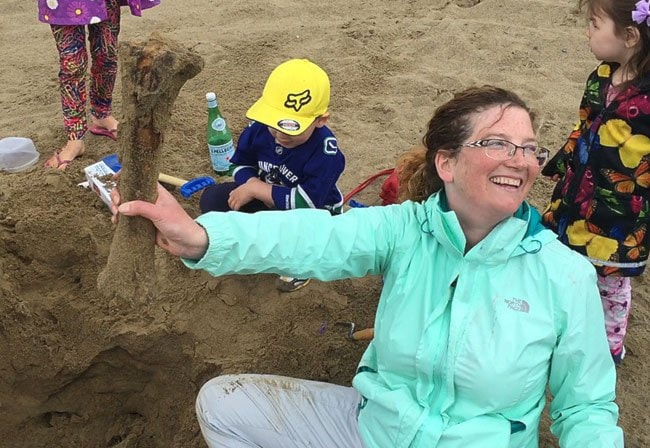Yukon archaeologists are asking whoever took the horse skull from the Carcross desert late Friday night to please return it.
A skull was reported in the Carcross desert on Friday night by a tour bus driver en route to Skagway. They had pulled off next to the Carcross interpretive sign for the usual photo-op when a tourist asked if what they saw were bones. They thought it was the upper portion of a bison, but it was later identified as a horse skull.
After snapping photos, the tour group stopped in the Carcross visitor centre, and the driver, Pete Lucetti, passed the message on to government archeologists.
Archaeologist Greg Hare went to the site Saturday morning to explore the remains - but he couldn’t find them.
After eventually getting a hold of the discoverer himself, it took a live FaceTime walk through of the site, retracing steps, to find the depression where they had once sat. Not long afterwards Hare came across a small stash of miscellaneous bones hidden nearby, covered with brush.
Going back to the site of the depression, they began to dig to see what else was there. “Bones started emerging from the sand in anatomical order, and we knew it was a full skeleton,” Hare explained.
The skeleton is not a fossil. It is likely around one hundred years old, from the population of horses that were reintroduced by Europeans in the late 1800s. Fossilized remains of horses can date back hundreds of thousands of years, from a time when original populations of wild horses were not yet extinct.
The remains in this case are not worth money, Hare explained. “It’s not like they are Pleistocene age. You can find remains of horses like this in many places,” Hare said.
But for Hare and his colleagues, they’re gold.
“We have a pretty comprehensive sample of most animals that lived in the Yukon that we use to identify other fossils and bones. We’ve been looking for one like this for years,” Hare explained.
Government archaeologists now know that someone had taken pictures of the horse skull a week previous, meaning it had been revealed by moving sand at least a week before Lucetti and his tour group stumbled upon it. All Hare and his team know is that sometime between Friday night and Saturday, someone decided to scoop the skull - and maybe more bones - stashing some extras in a nearby bush.
The bone-scooper likely has no idea their sand score is a valuable research tool.
Hare said these kinds of incidents do happen - people see things like this, think it’s cool and it ends up on their wall, then the garage, then the dump, Hare said.
“We’re not saying someone did something illegal or nefarious, but it would be great for us, we can benefit from it.”
Hare said it was quite rare to find skeletal remains in the sand, owing to the fact that lake bottom sediments that make up Yukon deserts were created at the edges of glaciers, so are relatively new.
Once the team knew the remains were not of archaeological era, it became a family affair. Yukon government paleontologist Elizabeth Hall’s sister Jessica came from nearby to help out with her kids as young as three in tow, Hare explained.
“The kids had their sand buckets and shovels - it made it a family day at the beach almost.”
Contact Lauren Kaljur at
lauren.kaljur@yukon-news.com
